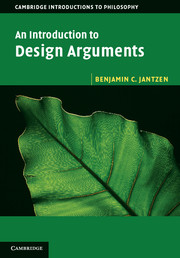Book contents
- Frontmatter
- Dedication
- Contents
- List of figures and tables
- Preface
- 1 Introduction
- 2 Preliminaries
- 3 Arguments from antiquity
- 4 Medieval arguments
- 5 The golden age of natural theology
- 6 Unusual design arguments
- 7 Hume
- 8 Paley
- 9 Darwin
- 10 Loose ends
- 11 The modern likelihood argument
- 12 Intelligent design I: irreducible complexity
- 13 Intelligent design II: specified complexity
- 14 What is complexity?
- 15 Supernatural agents and the role of laws
- 16 A brief survey of physical law
- 17 Fine tuning I: positive arguments
- 18 Fine tuning II: objections
- 19 Conclusion
- Bibliography
- Index
14 - What is complexity?
Published online by Cambridge University Press: 05 June 2014
- Frontmatter
- Dedication
- Contents
- List of figures and tables
- Preface
- 1 Introduction
- 2 Preliminaries
- 3 Arguments from antiquity
- 4 Medieval arguments
- 5 The golden age of natural theology
- 6 Unusual design arguments
- 7 Hume
- 8 Paley
- 9 Darwin
- 10 Loose ends
- 11 The modern likelihood argument
- 12 Intelligent design I: irreducible complexity
- 13 Intelligent design II: specified complexity
- 14 What is complexity?
- 15 Supernatural agents and the role of laws
- 16 A brief survey of physical law
- 17 Fine tuning I: positive arguments
- 18 Fine tuning II: objections
- 19 Conclusion
- Bibliography
- Index
Summary
Life: a classic example of ‘complexity’
The boundaries are hazy, but there does seem to be a genuine, objective distinction between living and non-living things. Unlike inanimate objects, living things reproduce, metabolize, and evolve. They are also vastly different in structure from non-living things. Living things tend to be highly organized at any given level of description and so differ from objects like stones, lakes, and volumes of gas which tend to have uniform or ‘random’ structures: Peer at a stone through a microscope and you’ll find a jumble of randomly oriented mineral crystals. Look closer and you’ll find the interiors of these crystals to be fairly uniform. Examine instead a cross-section of a sheep’s eye and you’ll discover intricate layers of tissue. Look closer at any one of these and you’ll discover cells, each of which contains a visible nucleus. Use the right tools to look even closer and each of these cells will reveal myriad structures like mitochondria. You will discover fresh structure in the eye all the way down to the molecular level. So unlike a rock, the structure of an organism is highly layered. Like the rock, however, the structure of an organism at any one level of description is often asymmetric. Though from the outside humans are bilaterally symmetric, on the inside many of our organs – like the liver and pancreas – are not arranged according to any particular symmetry. Because of this asymmetry, living things are easily distinguished from such things as snowflakes, crystals, and man-made gears.
- Type
- Chapter
- Information
- An Introduction to Design Arguments , pp. 226 - 239Publisher: Cambridge University PressPrint publication year: 2014

